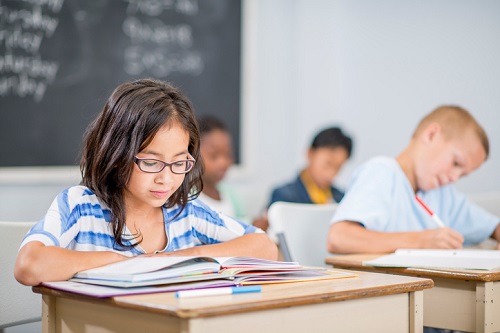
Are schools doing enough to personalise students’ learning experiences?
A girl takes out her phone and opens Instagram. On her feed are posts from friends she regularly interacts with on the platform. She likes several posts and moves to her “explore” tab, browsing posts about her favourite topics – food, pets and pop stars.
“Young people today are already getting customised experiences delivered to their fingertips through their devices,” said Don Carlson, director of education at Microsoft APAC.
“But in school, we put them in uniforms, place a mass-produced textbook in front of them, and ask them to learn in a specified way. To help them achieve better outcomes, we need to start transformation from the top and think about how nations, schools and teachers can deliver lessons that are tailored to students’ learning styles and needs.”
Schools and educational institutions are already laying the groundwork for change by looking at creating more personalised learning experiences for their students.
However, Carlson pointed out, if teachers were asked to develop individualised learning plans for 20 to 30 students every lesson, their likely reply would be that they don’t have the time.
“And that’s the role technology plays in the transformation of education. It empowers everyone in the ecosystem to maximise their resources and focus their efforts on driving the change they want to see,” he said.
“With digital tools and technology, we can build more personalised, conducive environments that allow every student to thrive – whether they are visual, auditory or kinesthetic learners.”
There are myriad technology tools available for educators to create more personalised experiences that cater to students’ different learning needs and styles. However, Carlson encourages school leaders and teachers to go a step further to fully capitalise on technology’s greatest strength – its ability to connect people across time and distance.
“You don’t have to build everything yourself,” he said. “That takes a lot of time and resources. There are many technology services and apps designed to enable seamless collaboration, so teachers and schools can pool their resources for greater efficiency and effectiveness.”
Instead of having to create lesson plans from scratch, teachers can now save time by working with existing content that was previously developed and tailoring the material for their students.
Beyond reducing the amount of effort and time taken to personalise lessons, technology can also be leveraged to understand students’ needs more deeply.
“Big data and analytics, complemented with the Internet of Things, provide insights into student learning patterns and their environments,” Carlson said. “By leveraging technology, we can use this data to create better lesson plans, curriculum materials, and policies that set students up for success.”
Omaha Public Schools in the United States, for instance, leverages data analytics to gain deeper insights into the effectiveness of their teaching tools and strategies. This allows educators and school leaders to make timely refinement to lesson plans and curricula for better student outcomes.
The information not only helps teachers take an insight-driven approach to improve their lessons, it also facilitates planning for schools, districts and national ministries. Using the analytics obtained from their apps, Omaha Public Schools can now look at coaching outcomes and educational trends more holistically for informed decision-making and strategizing.
“Technology can help to leverage resources and data in a more efficient and effective manner to scale personalisation for students,” said Carlson. “This enables educators and school leaders to tailor learning materials and create conducive environments that cater to individual learner needs, empowering students to flourish and achieve better learning outcomes.”
How is learning personalised in your school? Tell us in the comments below.
Related stories:
What will the future of education look like?
How technology impacts teaching and learning


